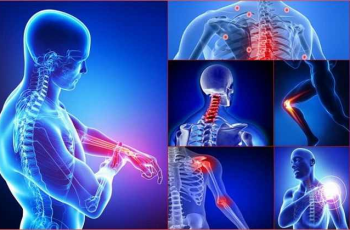5.Compression of the spinal nerves in the cervical region:

As the term implies, cervical spinal nerve compressions occur when the spinal nerves of the neck are compressed between the neck’s muscles and bones. This condition is most prevalent in individuals with a history of cervical injuries and preexisting spinal cord issues. Also possible in patients with severe postural or spinal deformity issues. C
Ervical spinal nerve compressions are frequently overlooked as a potential cause of shoulder discomfort because they are less common than the conditions listed above. Nonetheless, it possesses unique characteristics, symptoms, and signs. As with the majority of nerve compression syndromes, this one will cause referred and radiating pain, as well as tingling and paralysis in the upper extremities.
Obtaining a diagnosis is essential because you may need to alter your lifestyle in order to control pain. You may require exercises to improve your posture and strengthen the muscles in your neck. Additionally, you may need to avoid activities that could cause your neck muscles to tighten.




